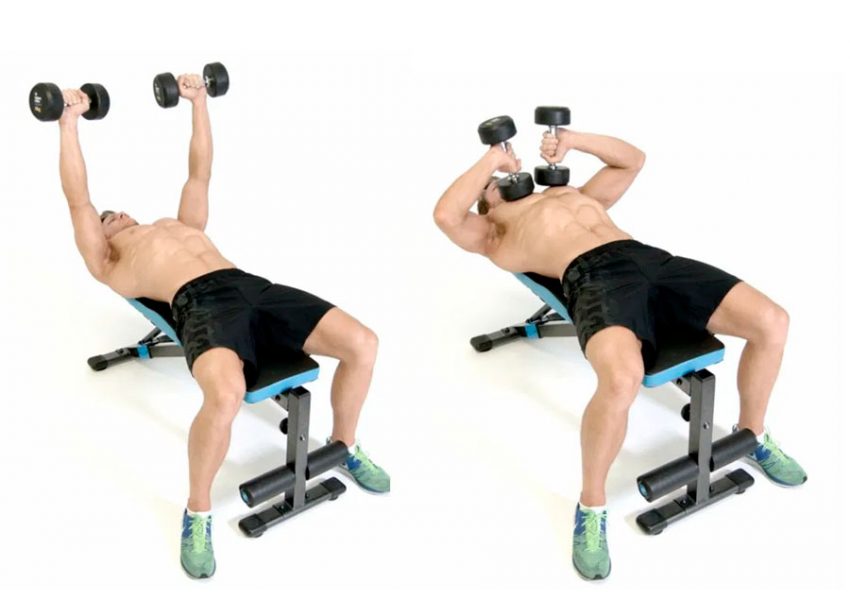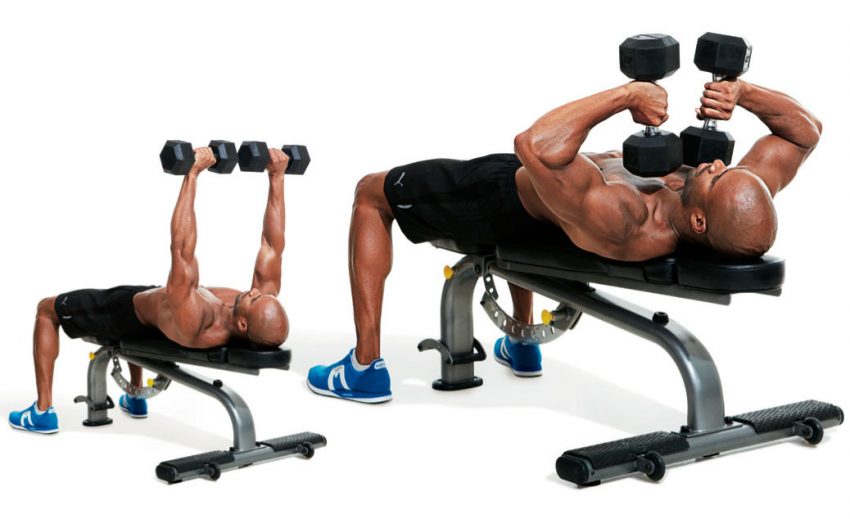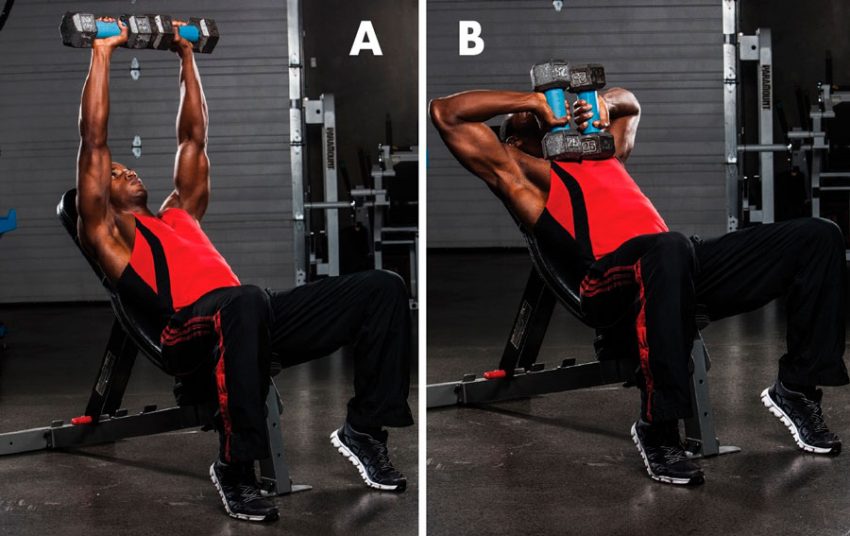The Tate bench press is named after the great powerlifter D. Tate. It is an auxiliary triceps exercise for the power bench press. The athlete, unlike the athletes of the Japanese and Russian schools, presses in a power triceps style. And this press is one of his favorite tricks to raise the strength of the triceps muscle to the necessary level. In addition, the Tate press is very useful for bodybuilders who are tired of looking for an exercise that effectively develops the triceps and is not too bad for the elbows.
Execution technique

Initial position
- This is a press with dumbbells, so you should correctly throw them off the floor;
- If the assistant does not help, then from a standing position the dumbbells are raised in the deadlift technique to the level of the “pockets” and are installed with dumbbell discs on the hips;
- Then the athlete sits down and brings the dumbbells to the bench press position with his feet;
- The palms with dumbbells remain strictly under the shoulders;
- The shoulder blades are in a movable bridge, that is, the back is tense, but the shoulder blades are not rigidly pulled towards the spine;
- In powerlifting, it is customary to perform the Tate press with support on the buttocks and trapezius muscles, This allows you to protect the shoulders from injury in the pressing movement;
- Bodybuilders usually do on a flat back, just rest their feet firmly on the floor and try not to round their shoulders forward.
Performance
- On inhalation, the arms at the elbow joints are bent, the dumbbells are lowered to the chest;
- On exhalation, press is performed – arms are extended at the elbow joints and the dumbbells are raised up;
- The depth of flexion is comfortable, it is necessary to lower the dumbbells just as far as it does not cause painful sensations in the elbow joint.

Attention
- The Tate press is exactly the press, not the flexion and extension of the elbows, as in other triceps exercises. Lowering the dumbbells should be slow and controlled, there is no goal to touch the biceps brachii with the forearm;
- You should choose such an angle of flexion at which the shoulders will not hurt, there will be no discomfort in the elbows, and at the same time the dumbbells will not touch each other. Athletes with large arms and long forearms should do this exercise alternately, first with the weaker arm and then with the stronger arm;
- The blades should not be displaced from the bench, this is fraught with loss of control;
- In powerlifting, this ancillary exercise is performed with minimal weights and in multi-repetitions. Those who want to take risks and do the Tate press in refusal should use the help of an assistant;
- Those who perform the exercise exclusively with heavy weights use the help of an assistant in taking the starting position, since the stabilizers’ capabilities may not be enough for alignment;
- The movement should not lead to flexion of the wrists. If holding the dumbbells is heavy, wrist bandages can be wrapped, but bending of the wrists should not be allowed
- The exercise is conceived as an isolating triceps, the back is “collected” only for the safety of the shoulder joint. You should not push off with your shoulder blades from the bench and make any unnecessary movements with your brushes.
Execution options

- Press with one hand . This option is used by those who have a significant lag in one triceps from the other in development, as well as those who want to develop both triceps in a balanced way for aesthetics or strength. It is useful to everyone from time to time, because in a “full-fledged” movement, we tend not to refine the amplitude;
- Incline bench press . This variation should, in the minds of the athletes, shift the emphasis to the long head of the triceps, but in fact the same is done by a slight deflection upward in the thoracic region. In addition, the “bridge” is safer for the shoulders;
